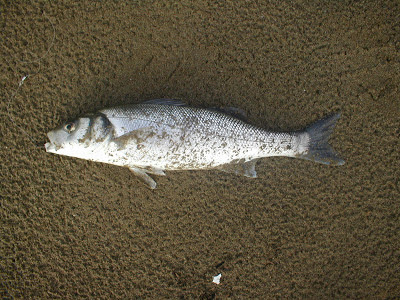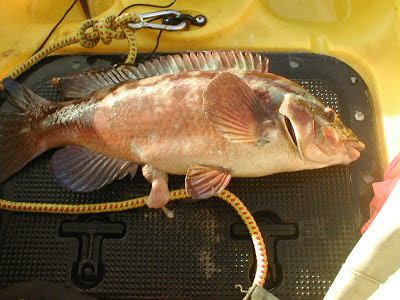I am spending Christmas and New Year up country in north Buckinghamshire. That is about as far from the nearest coastline as you can be therefore, sea fishing over the holiday period is out of the question. If the lakes and rivers are not too flooded, I planned to do some Pike fishing instead.
Before leaving for Buckinghamshire this weekend, I was keen for one more sea fishing session, which would be my last of 2012. Work commitments meant I would not have enough time for a kayaking trip therefore; it had to be a few hours on the beach with bait or shallow rough ground with plugs. I decided on shallow rough ground with plugs.
In the late autumn opportunities for shore plug fishing are limited mainly due to the clarity of the water. The autumn seas colour the water making lure fishing difficult and it is probably better to fish with bait. However, on the occasions when the water clears it is still possible. The Bass are still around and I target them to the end of December and sometimes into January.
On Tuesday, the seas calmed down, and the shallows cleared, and I was hoping that today it would still be clear enough. I decided to fish a shallow rough ground mark that I had highlighted in a previous post Shore Bass Fishing with Plugs 17/11/12.
It was low water was at 16:00 and I could make it to fish an hour before low water and fish up to dusk. Previous records had shown that around the low water period to be the best time.
When I arrived, the water was clear however, there was a lot of floating weed, which was going to make plug fishing difficult. It would be a case of casting into the clear sections of water and hoping I did not pick up bits of weed on the retrieve.
When I fish this mark I usually cast over the weed covered rocks or into gullies but this did not produce any takes. Another feature is a very narrow sandy beach that runs between the rough ground. This had large amounts of loose weed washed up from the previous rough seas.
In the past, I have seen Bass patrol just behind weed similar to this. I think they look for small baitfish that swims into the weed at the water's edge. I sometimes see Cormorants diving amongst the weed after the same small fish. From a side vantage point, I decided to cast the plug just beyond the weed and retrieve along the edge. Within two turns of the reel bang, a Bass was hooked and landed.
The fish took a Tackle House Feed Shallow.
It never ceases to amaze me that you can catch Bass in such shallow water. Sometimes you have to keep telling yourself that they could be there rather than thinking deeper water. If there were, one thing I could pass on regarding shore Bass fishing it would be think shallow not deep. This Bass was caught in no more than a foot of water.
The Bass was 41cm so not a monster. My last two shore Bass fishing trips had produced six undersized Bass that were returned therefore, this one was for the Christmas pot. No more fish were landed on this trip.
With regards to Bass size limits there are many calling for an increase from the 37.5cm to 40cm and higher. Based on my own catch record over several seasons there appears to be plenty of Bass available to the rod and line angler over 40cm therefore, if there was an increase I believe there would still be plenty of opportunities to take some for the table and it can only make it better for the rod and line angler. I only target Bass from September to December and sometimes into January. This season to date I have caught 35 Bass that have been over 40cm. I have not taken all of those Bass but have had more than enough for the table.
I am looking forward to next year's fishing both from the shore and from the kayak. I am also looking forward to getting together with some of the Cornish kayakers from the Anglers Afloat forum. In the meantime, it is up country for some Pike fishing.







































